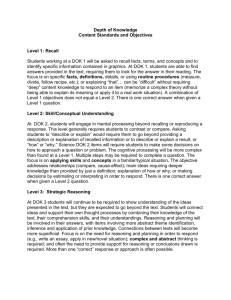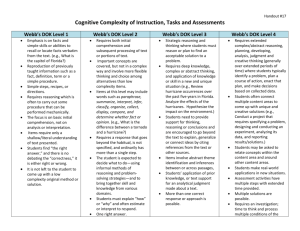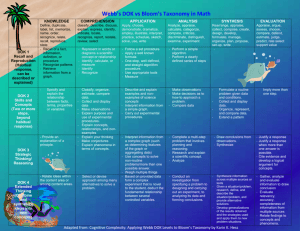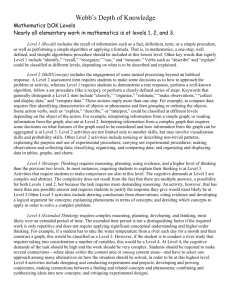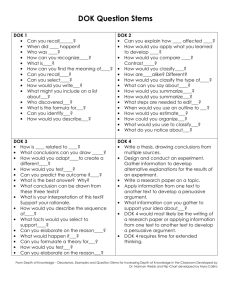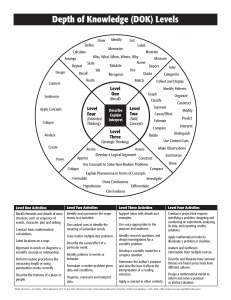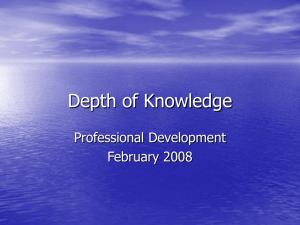Making Connections PPT - GRREC Social Studies Leadership
advertisement
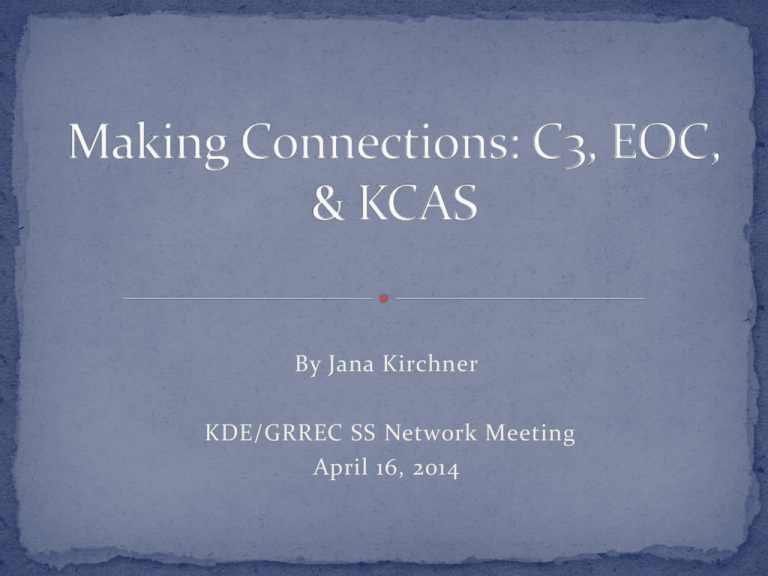
By Jana Kirchner KDE/GRREC SS Network Meeting April 16, 2014 Brainstorming - When students graduate from your high school social studies department, what skills would you like them to have? What “texts” do we use to teach social studies? KCAS: Literacy in History/SS ACT Quality Core Process Skills • C3 Reporting Category Percent of MC Items Building a Nation (B) 20-30 Rebuilding a Nation (C) 20-30 Challenges at Home and Abroad (D) 20-30 America Since WW II (E) 20-30 Total 100 DOK Levels Percent of MC Items Level 1 – Recall 20-30 Level 2 – Basic Reasoning 40-50 Level 3 – Complex Reasoning 20-30 Total 100 • Level I measures Recall at a literal level. • Level 2 measures a Skill or Concept at an interpretive level. • Level 3 measures Strategic Thinking at an evaluative level. • Level 4 measures Extended Reasoning. Module 3 4 DOK Level 1 Recall Requires recall of information such as a fact, term, definition, or a simple procedure Requires students to demonstrate a rote response or perform a simple procedure DOK Level 2 Skill/Concept: Basic Reasoning Requires mental processing beyond recall or reproducing an answer Students must make some decisions about how to approach a problem Cognitive demands are more complex than in Level 1 Comparing and interpreting trends or patterns, describing cause/effect; interpret point of view DOK Level 3 Strategic Thinking: Complex Reasoning Requires planning, thinking, explaining, justifying Cognitive demands are complex and abstract Develop a logical argument, justify “how” and “why” with evidence; draw conclusions from observations; make connections across time and place • To get a sense of what students will experience when taking a timed assessment, you will take a sample quiz that includes released EOC items. http://www.online-stopwatch.com/large-stopwatch/ • Reflecting on the sample questions… Module 5 1 U.S. History 1. B 2. B 3. B 4. D 5. C 6. D 7. B 8. B 9. B 10. D Module 5 5 Module 5 6 What was the legacy of the era depicted in this nineteenthcentury illustration? A. The Emancipation Proclamation B. Grandfather clauses and poll taxes C. The Dred Scott v. Sanford and Plessy v. Ferguson decisions D. Fugitive slave laws Thomas Nast “Worse Than Slavery” Oct. 24, 1874 Harper’s Weekly Answer B DOK level 3 Standard: Identify the characteristics of social conflict and social change that took place in the early 1920s. A researcher uses census data from 1900, 1910, and 1920 to identify foreign-born heads of working-class households in Pittsburgh, Pennsylvania. He discovers a high percentage of the same surnames in all 3 censuses. Using this information, he can propose generalizations about which topic? A. Consumer preferences B. Health conditions C. Immigration patterns D. Leisure activities What do you notice about these sample EOC items? How do you integrate literacy skills into your class? Strategies for teaching a variety of SS texts? Reading and writing like a historian? Text structure in SS? (pp. 241-242)
